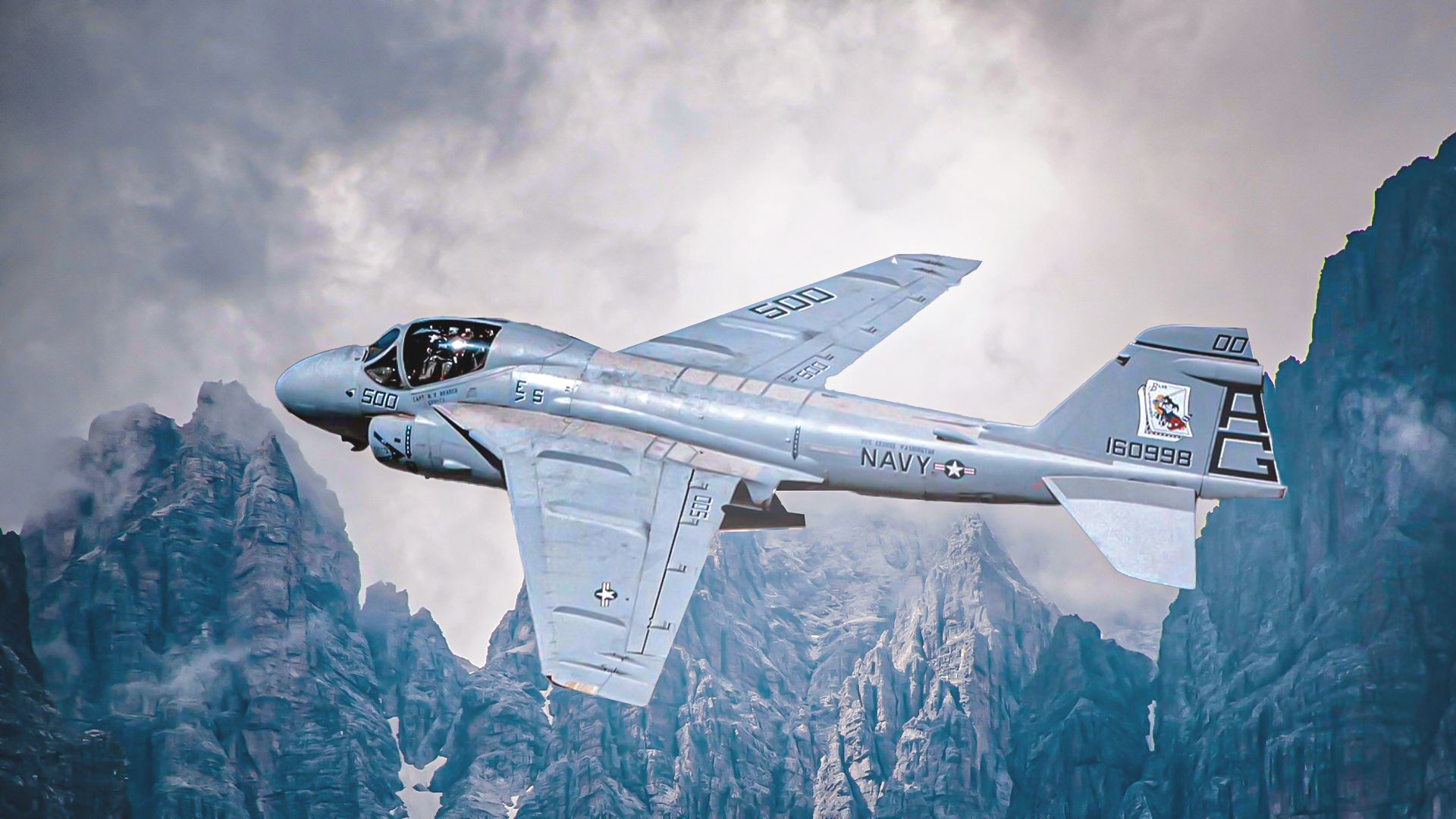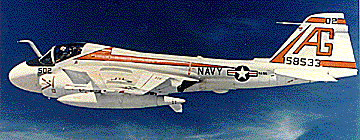Summary
- The A-6 Intruder was a ground attack aircraft used by the US Navy and Marine Corps from 1963 to 1997.
- The Intruder had a very impressive array of ground attack weapons, including rockets, missiles, bombs, and mines.
- The Intruder saw combat in the Vietnam War, where it was frequently used in low-level missions and was vulnerable to enemy antiaircraft fire.
I first became familiar with the Grumman A-6 Intruder as a teenager, via two sources concurrently: (1) the real-life Persian Gulf War AKA Operation Desert Storm, which kicked off on January 17, 1991; and (2) the fictitious motion picture “Flight of the Intruder” — starring Danny Glover, Willem Dafoe, and the late Brad Johnson (not to be confused with the NFL quarterback who led the Tampa Bay Buccaneers to victory in Super Bowl XXXVII — which by sheer coincidence was released the day after Desert Storm commenced.
“The A-6 was the U.S. Navy’s medium attack bomber during the Vietnam conflict. It flew at tree-top level in any weather at night and alone. The aircraft had no defense weapons.”
“It was called — The Intruder.”–from the film’s prologue
“Flight of the Intruder” was based on the bestselling novel of the same name by Stephen Coonts (CDR, USN, Ret.), himself a former Naval Aviator and A-6 Intruder pilot in the Vietnam War, just like his protagonist, LT Jake “Cool Hand” Grafton. Simple Flying now separates the facts from the fiction in examining the combat history of the Intruder’s 30+ years of faithful service to the US Navy (1963-1997) and Marine Corps (1963-1997).
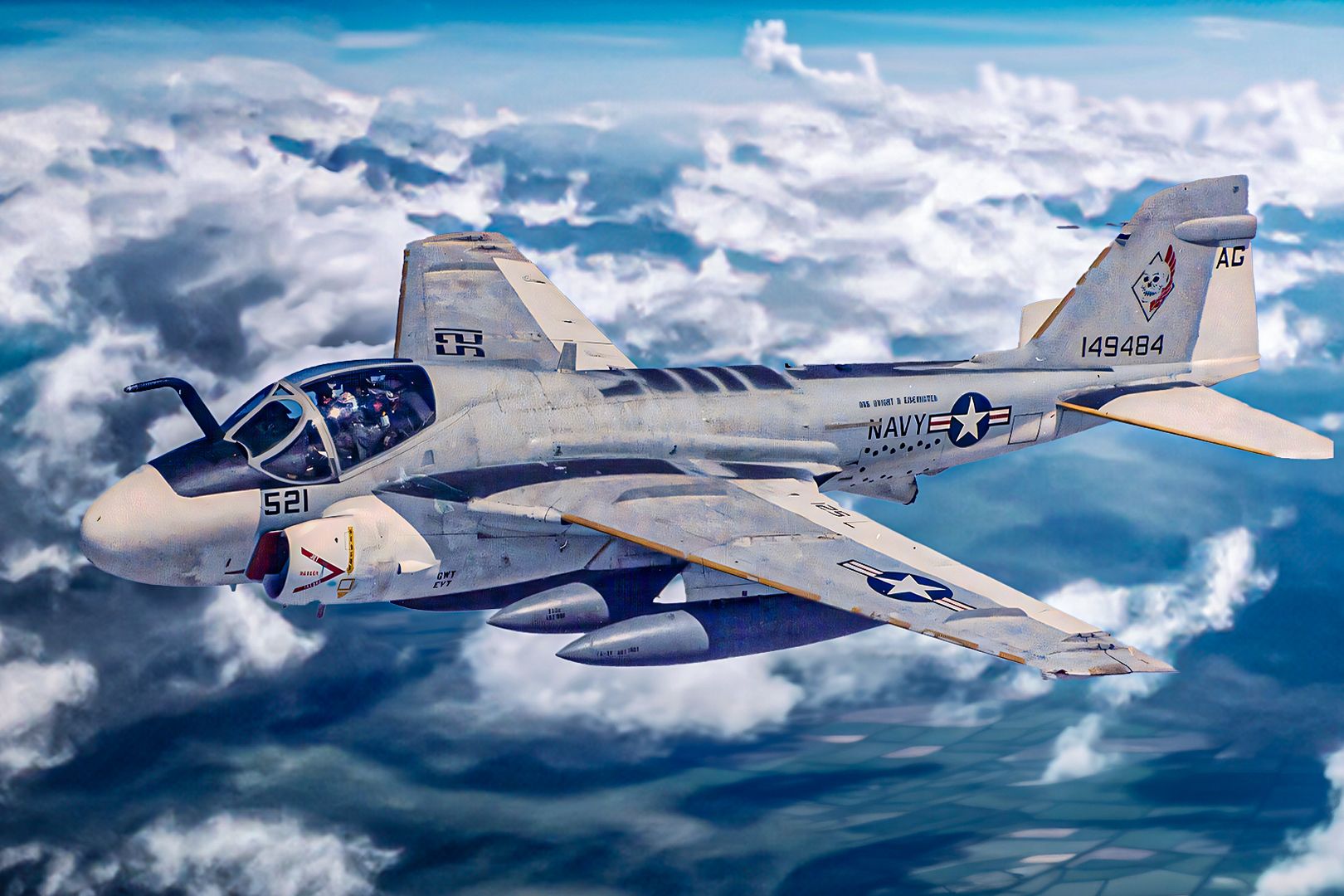
Related
5 Facts To Know About The Grumman A-6E Intruder: US Navy & Marine Corps’ Cold War Versatile Bomber
It is the world’s first fully all-weather attack bomber.
Strictly ground attack
Typical Hollywood embellishment aside, that part about “no defense weapons” was factually correct. (I remember thinking to myself at the time, “To hell with that! I’d prefer to have the option of shooting back, thank you very much! At least the A-7 Corsair II [another Cold War era USN carrier-borne ground attack plane still in service at the time] has a cannon!”)
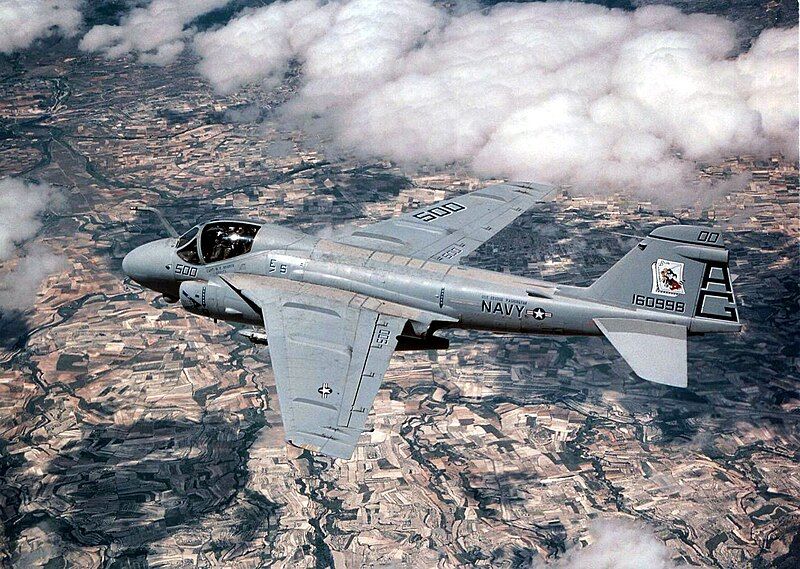
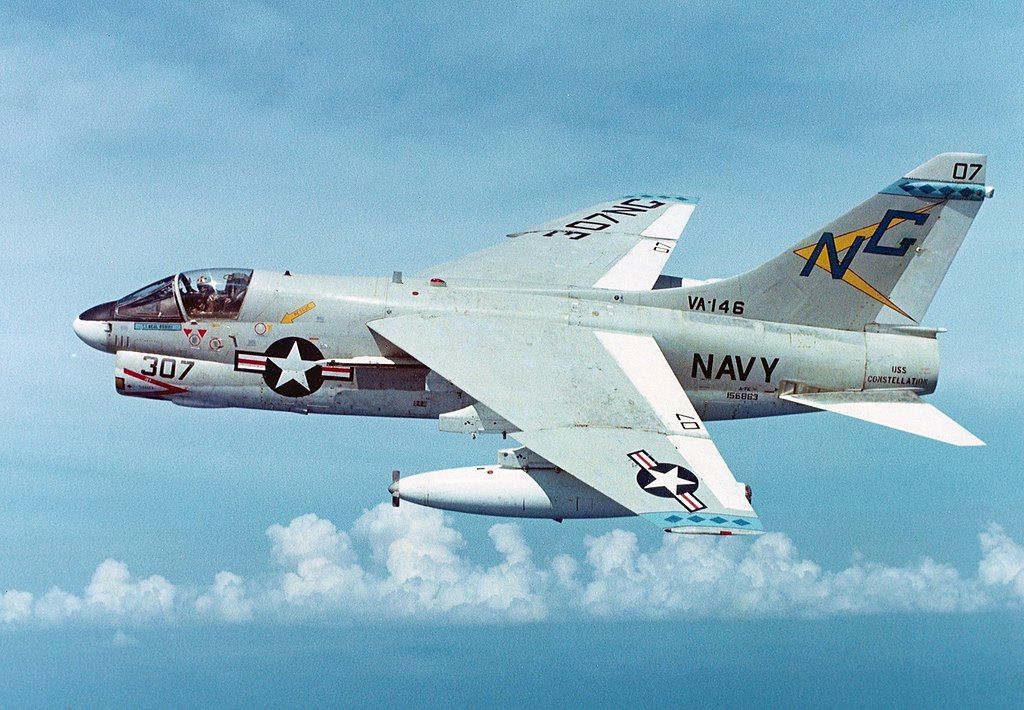
That said, the Intruder did have a very impressive array of ground attack weapons; these warbirds packed so much air-to-ground ordnance that the North Vietnamese called them “miniature B-52s.” (Granted, the B-52 variant in service during the Vietnam War still had a tail gun, but eh, why nitpick?”). That arsenal reads as follows:
|
Hardpoints: |
Five hardpoints with a capacity of 3,600 lb (1,600 kg) each (4 under wings, 1 under fuselage), 18,000 lb (8,200 kg) total, with provisions to carry combinations of: |
|
|
|
|
|
|
Indeed, according to Naval History and Heritage Command, the A-6 Intruder made history as:
“[T]he world’s first fully all-weather attack bomber capable of detecting and identifying tactical or strategic targets, and delivering both conventional and nuclear ordnance on them under zero-visibility conditions…The Intruder has been the mainstay of the Navy and Marine Corps air arms for more than three decades. It has been constantly improved upon over this time span and has been used for close-air-support, interdiction, and deep-strike missions.”
A-6 Combat History Part I: The Vietnam War
As you may have already extrapolated from both (1) the novel and movie references at the beginning of this article and (2) the 1963 debut year of the Intruder, it was in fact in the skies over Vietnam that the Intruder was first “blooded” in combat. It was indeed frequently used in low-level missions, which unfortunately made the warbird extremely vulnerable to enemy antiaircraft fire; over the course of the eight years the Intruder was used during that war, the USN and USMC lost a total of 84 A-6s.
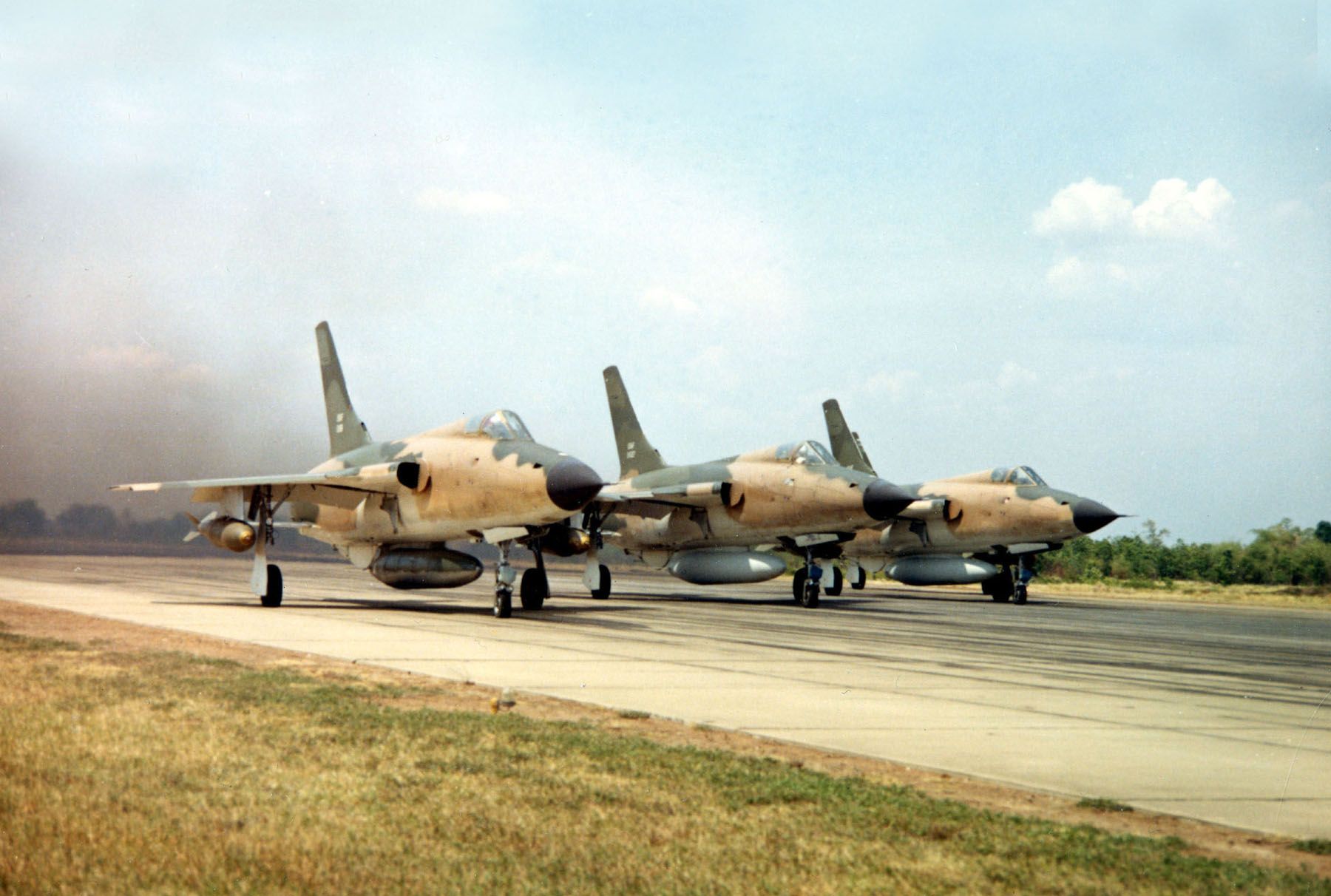
Related
5 Military Aircraft That Defined The Vietnam War
Many different fixed-wing aircraft were involved in the war – on both sides.
The Intruder’s first combat mission took place in July 1965, flown by Attack Squadron 75 (VA-75 AKA ATKRON 75) off the carrier USS Independence (CVA 61). According to Hal Andrews in an article for the October-November 1997 issue of Naval Aviation News titled “Life Of the Intruder”:
“The A-6’s initial combat record was anything but auspicious; the Intruder suffered problems typical of a new combat aircraft entering operational use and combat simultaneously. Premature explosion of bombs soon after release accounted for the first, and some subsequent, ‘combat’ losses. This and the unreliability and excessive maintenance of the complex integrated avionics systems on which its all-weather bomber capability depended were tackled head on. The first was solved by fusing and wiring changes and adding multiple ejector racks on the five-store pylons.”
The second was more pervasive and was a continuing problem. These technical aspects
led to indecision on operational mission assignments: whether to assign A-6 missions based on
large bomb-carrying capability or on all-weather capabilities.”
In spite of all these adversities, the Intruder would persevere for an additional solid two decades. To quote Naval History and Heritage Command again:
“The A-6B, whose primary job was the suppression of surface-to-air missiles[SAMs], was basically an avionics modification of the A-6A with provisions for the Navy’s anti-radiation missile. The A-6C, born of the SEAsia war, incorporates electro-optical sensors to observe and attack vehicles moving under cover of darkness.”
In addition, an electronic warfare EA-6A version was developed for the “devil dogs” (Marine Corps, that is), with 28 airframes converted from the A-6A platform.
A-6 Combat History Part Deux: the 1980s (Lebanon and Libya)
In 1983 — ten years after the end of the A-6’s Vietnam tenure — the plane saw its next battlefield, this time in support of the Multinational Force in Lebanon in 1983. One Intruder was shot down by Syrian forces; pilot LT Mark Adam Lange was killed, and bombardier/navigator LT (now retired CDR) Robert O. “Bobby” Goodman was captured and held captive for 30 days.
Fast-forward three years, and Intruders would see combat in another Middle Eastern hotspot, this time Libya, as part of Operation Eldorado Canyon, retaliatory raids against strongman Muammar Khaddafi’s forces as retaliation for a Berlin discotheque that killed an American serviceman and his girlfriend and injured 200 others (including 75 Americans). This time, no A-6s were lost.
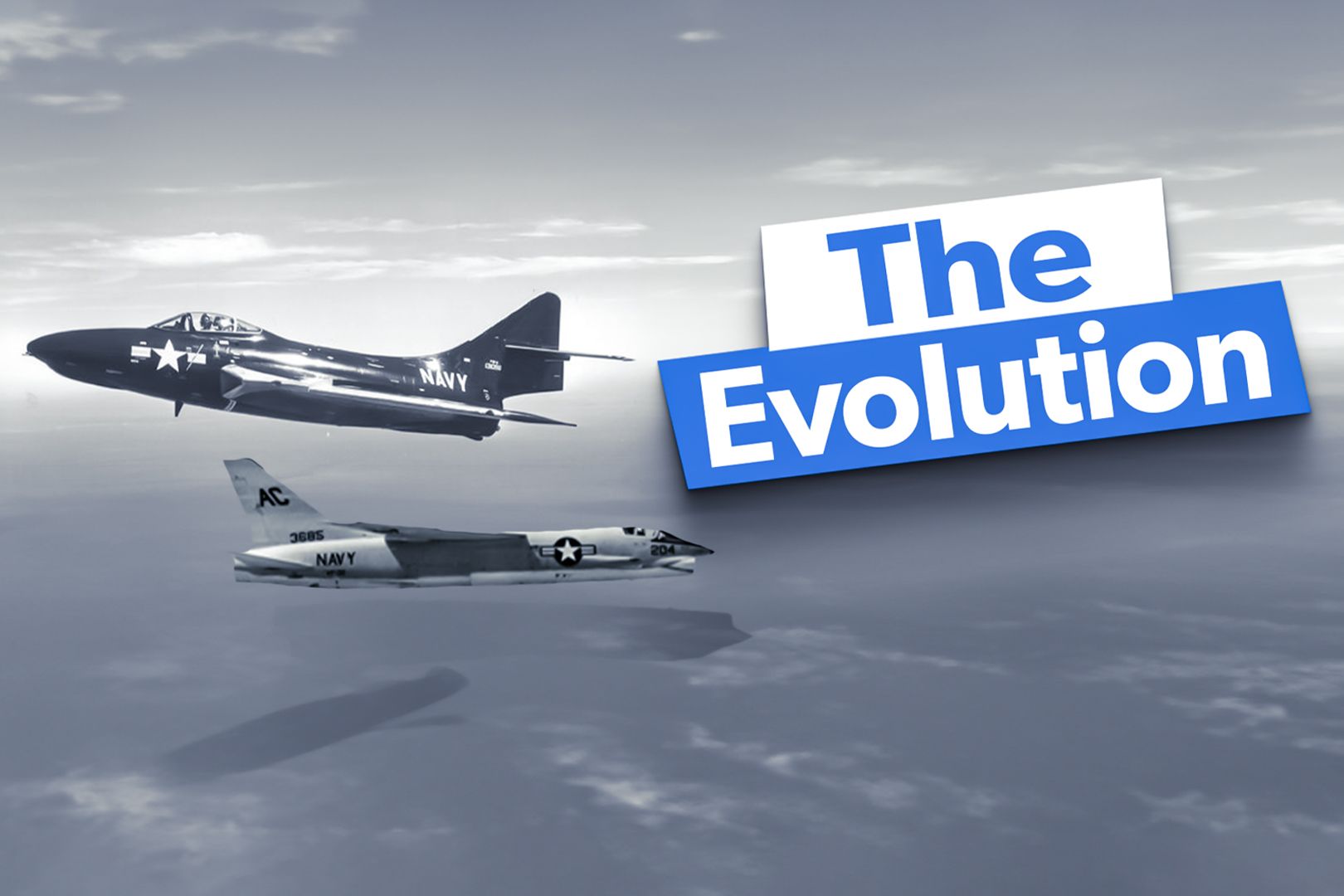
Related
The Evolution Of US Naval Air Power: From WWII Carrier Aircraft To Modern Jets
Naval aircraft technologies have changed drastically over the years.
A-6 Combat History Part III: 1991 Persian Gulf War
Yet another Middle East hotspot and this was where the Intruder had arguably its finest performance. In support of the multinational coalition’s war effort to drive then-Iraqi dictator Saddam Hussein out of Kuwait, the A-6 served as the USN’s primary strike platform for delivering precision-guided munitions (PGMs), flying more than 4,700 combat sorties against Iraqi air defenses, naval units, and strategic targets.
In exchange, three A-6s were shot down by Iraqi AAA fire and SAMs. At least one of the captured Intruder drivers, then-LT Jeffrey Zaun, was used as a propaganda pawn by his captors, paraded in front of Iraqi TV cameras whilst reading coerced statements denouncing the war effort.
Last combat hurrah: Bosnia, 1994
By this time, the Marines had already retired the A-6 the year prior, but the Navy would keep them flying for four more years. Accordingly, the Navy used its Intrude for its last combat action in 1994, strikes against Bosnian Serbs who were carrying out an ethnic cleansing campaign against Bosnia’s Muslim majority populace. No losses were incurred by the A-6 drivers in this engagement.
In the meantime, the Intruder’s legacy was carried out by an electronic warfare (EW) variant, the EA-6B Prowler, which served until 2019 and remarkably incurred a single combat loss.
On a personal postscript, in 1998, I applied to the Navy Officer Candidate School (OCS; I ended up going to the Air Force instead, but that’s a different story). One of the recruiters I talked to was a former A-6 driver who was sporting a belt buckle bearing an engraving of his dearly departed former aircraft. “The A-6 Intruder, gone but not forgotten,” he wistfully said.

